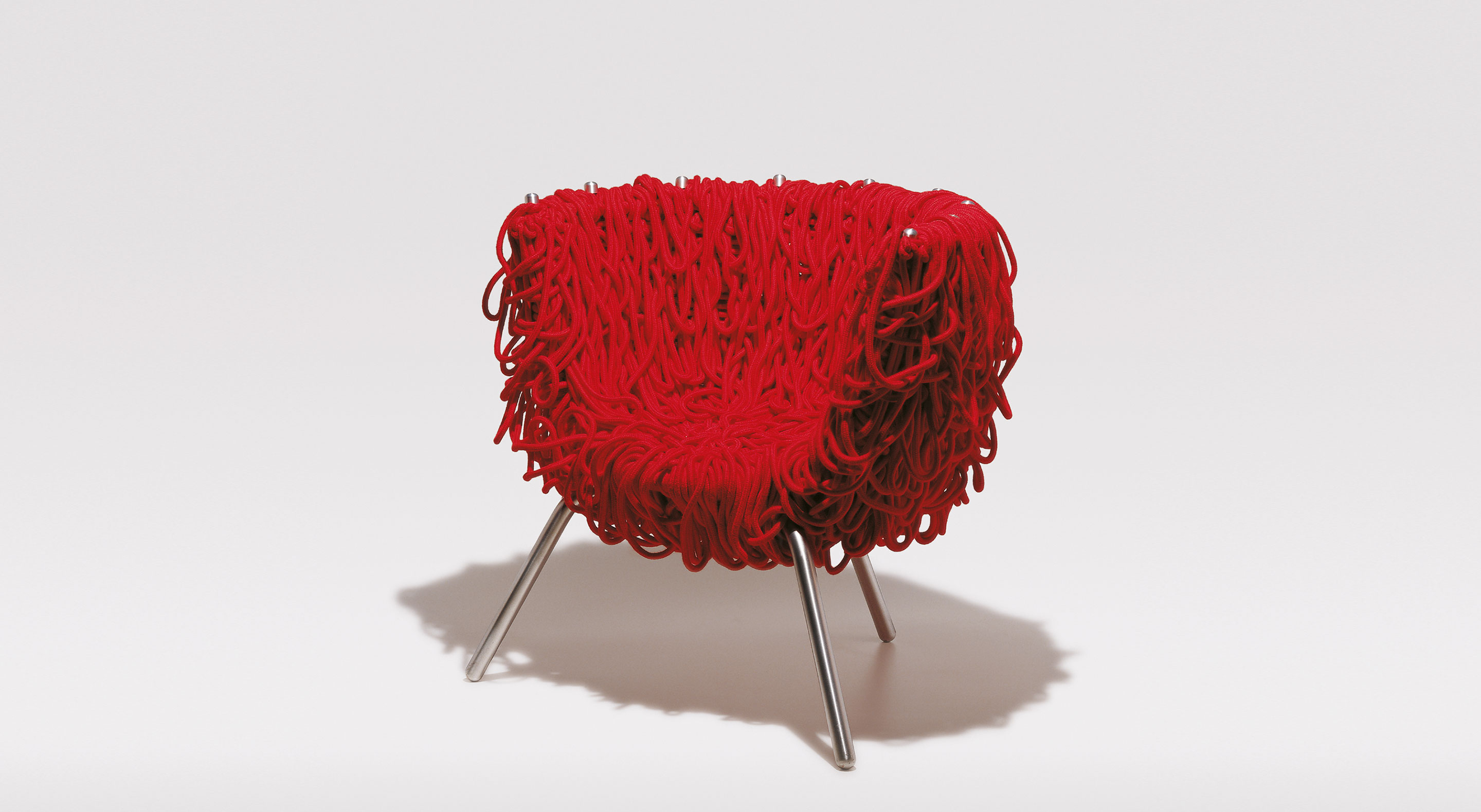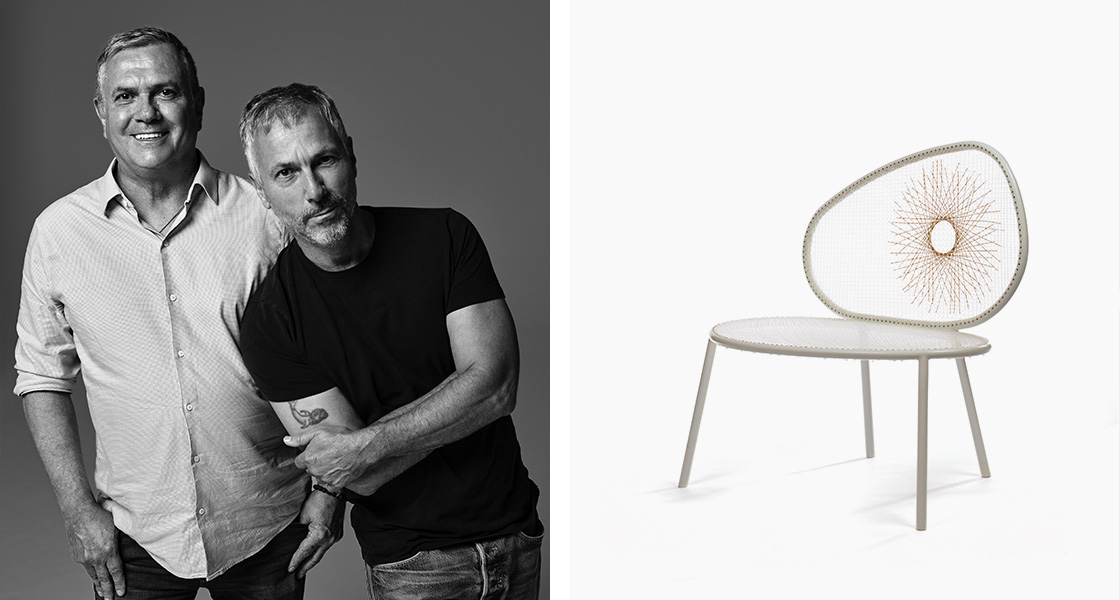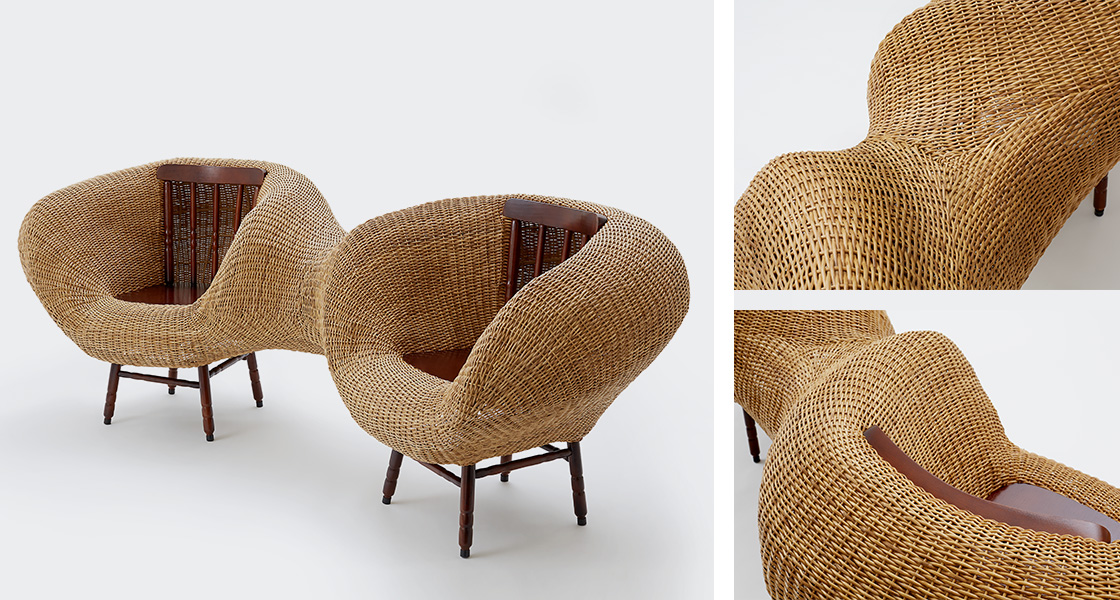The Campana brothers, modesty and opulence
Published on 6 March 2021

Brazilian-born Humberto and Fernando Campana have just celebrated 35 years in the industry. The perfect time to turn back the clock.
“It would be a real honour if our work as designers had played some part in giving future generations a sense of ecological awareness”, said Fernando Campana in an interview with French daily Le Monde back in 2016. As the largest-ever retrospective exhibition of their work draws to a close at Rio de Janeiro’s Museum of Modern Art, the São Paulo-based brothers, who have been associates since 1984, continue to combine their talents to produce a profusion of extravagant, Baroque-style pieces. Pieces that straddle the boundary between art and design. Because despite having dreamed up baskets for Alessi or painted fine porcelain plates for Bernardaud, the majority of their designs are only produced in limited edition runs of no more than a dozen units. Their creations are exhibited in galleries and museums the world over, from New York’s MoMA to Switzerland’s Vitra Museum and the Musée des Arts Décoratifs in Paris, which hosted a major 2016 exhibition dedicated to their work. Edra also manufactures some of their most iconic pieces: the Vermelha chair (“red chair”), crafted from 500 metres of rope intricately knotted onto a frame, which propelled them onto the global stage in 1993; and the Favela chair, composed of dozens of pieces of reclaimed wood, inspired by the construction methods used in Brazilian shanty towns.


“We love turning the most basic, modest materials into truly opulent pieces”, explains Humberto, the eldest of the pair. Their studio, located in the heart of one of São Paulo’s most vibrant working-class districts, serves as their base. From there, they head out to comb the streets for discarded odds and ends, destined to be weaved, glued or hand-stitched together: offcuts of wood, plastic chairs, scraps of leather. One such outing saw them cross paths with a man balancing a huge bundle of soft toys on his head. He ended up serving as inspiration for their “banquette” chair, a creation covered in a riotous scrum of tigers, panthers, crocodiles, dolphins and other synthetic-furred favourites. Humberto, who started out as a lawyer, loves nothing more than being in the workshop, where he spends his days sculpting. “I don’t work with my brain, but with my soul,” he says. Fernando, who trained as an architect, is more conceptual. Both have thrust the beauty of artisan wares firmly back into the spotlight. Their craftsmanship is imbued with the unpretentious ingenuity of Brazil. “I come from a country whose history is still in the making. Unlike Europe, we don’t have years of tradition upon which to draw,” explained Humberto during the “From Instituto Campana with love” talk at the Maison&Objet Sustainable Digital Days. He also offered an insight into the commitment underpinning their work, an ode to protecting the natural environment and preserving the planet’s resources. “We hold up a mirror to everything that’s going on under our noses - deforestation, populism, migration... it’s a topsy-turvy world”, laments Humberto. In 2009, they set up the Instituto Campana, whose vocation is to promote social transformation through design by giving people the opportunity to learn an array of artisan techniques. In the countryside around the State of São Paulo where the brothers grew up, they have already planted thousands of trees and are now busy creating a land art garden, which will also serve as the backdrop for a museum that will place their artistic legacy centre stage.
